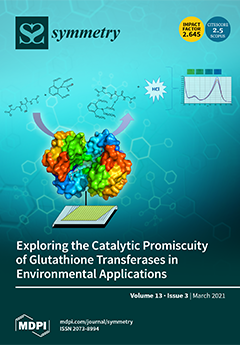The algebraic as well as geometric topological constructions of manifold embeddings and homotopy offer interesting insights about spaces and symmetry. This paper proposes the construction of 2-quasinormed variants of locally dense
p-normed 2-spheres within a non-uniformly scalable quasinormed topological (
C,
[...] Read more.
The algebraic as well as geometric topological constructions of manifold embeddings and homotopy offer interesting insights about spaces and symmetry. This paper proposes the construction of 2-quasinormed variants of locally dense
p-normed 2-spheres within a non-uniformly scalable quasinormed topological (
C,
R) space. The fibered space is dense and the 2-spheres are equivalent to the category of 3-dimensional manifolds or three-manifolds with simply connected boundary surfaces. However, the disjoint and proper embeddings of covering three-manifolds within the convex subspaces generates separations of
p-normed 2-spheres. The 2-quasinormed variants of
p-normed 2-spheres are compact and path-connected varieties within the dense space. The path-connection is further extended by introducing the concept of bi-connectedness, preserving Urysohn separation of closed subspaces. The local fundamental groups are constructed from the discrete variety of path-homotopies, which are interior to the respective 2-spheres. The simple connected boundaries of
p-normed 2-spheres generate finite and countable sets of homotopy contacts of the fundamental groups. Interestingly, a compact fibre can prepare a homotopy loop in the fundamental group within the fibered topological (
C,
R) space. It is shown that the holomorphic condition is a requirement in the topological (
C,
R) space to preserve a convex path-component. However, the topological projections of
p-normed 2-spheres on the disjoint holomorphic complex subspaces retain the path-connection property irrespective of the projective points on real subspace. The local fundamental groups of discrete-loop variety support the formation of a homotopically Hausdorff (
C,
R) space.
Full article





